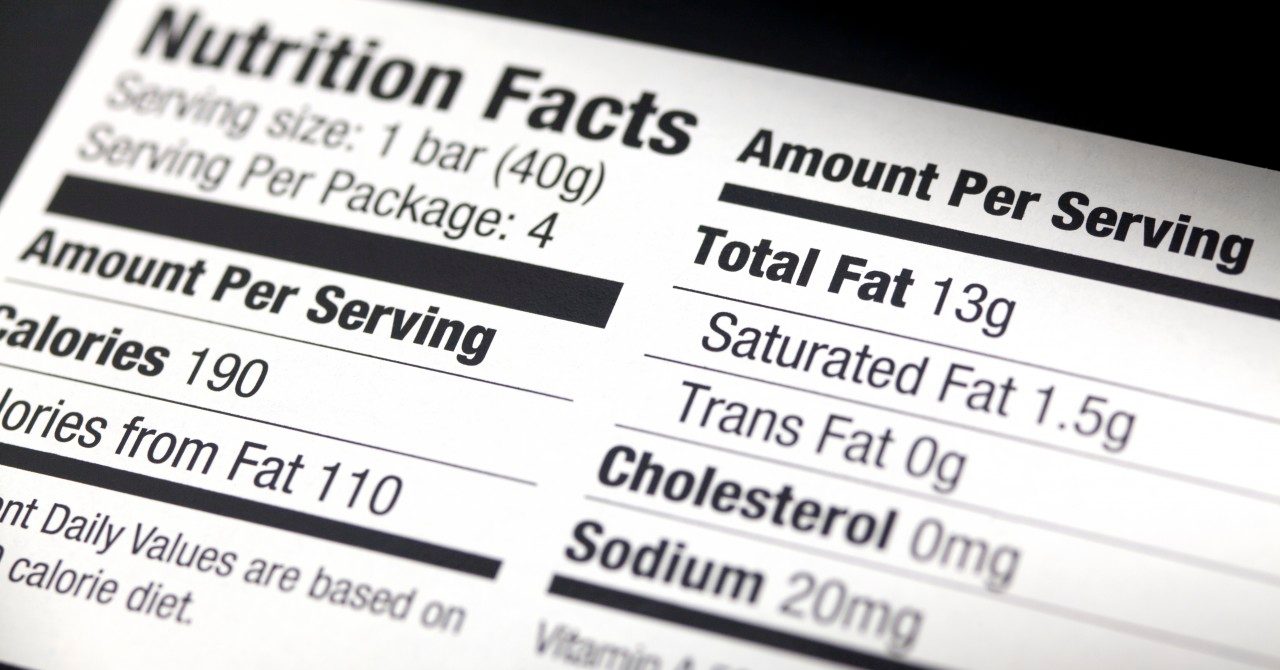How to Understand Those Confusing Nutrition Labels

First, know the difference between the marketing on the front of the package and the coded facts on the back.
You don’t need a degree in nutrition to understand nutrition claims and labels, but you do need an education in how to read them and what they actually mean.
Even the Food and Drug Administration (FDA), which oversees food labeling, says nutrition labels are too confusing for most people.
A study by FDA researchers found that people were pretty good at understanding nutrition values of foods like chips and frozen meals. But that was only when they were shown a nutrition label that included values for the entire package’s worth of food, or for one serving and the whole package.
In general, though, participants were confused by too much information that was out of context because so many labels break down nutrition facts only by serving amounts.
Labels can make products seem healthier. Yet while packages increasingly get smaller, but more costly, some companies simply increase the number of servings per container on the label. Consumers tend to miss this problem with labeling, says Bonnie Taub-Dix, a registered dietitian who runs a nutrition consulting company.
Her book, “Read It Before You Eat It,” is very pointedly a guide to understanding food labels, and she suggests taking it or other useful information with you to the grocery store. It’s like having a decoder ring for food labels.
But FDA researchers cautioned that it remains unclear whether easier to understand nutrition labels would even change what you choose to buy or eat.
Dietitian Timi Gustafson ponders that as well, saying that although she supports the “new attention nutrition labels are getting…I seriously doubt that improved label designs will lead to better eating habits on a large scale.”
Her skepticism is supported by another study, in which researchers found that only slightly more than half of American consumers actually look at the ingredients. Only 44 percent review health claims.
Still, for the half of you who do read the labels, some advice is in order. Taub-Dix says in her book it’s important for you to recognize there are no “miracle foods that can provide everything (you) need in one little package. That’s like expecting one instrument to play the sounds of an entire symphony.”
Next, recognize that often “the front of the package doesn’t match the back.”
“There are buzzwords that are used to entice people to buy food that could be misleading,” she says. “Some words just aren’t regulated, like the word `natural.’ That may be the most common word on food labels but it’s not clearly defined. To most consumers, it means the food is wholesome and healthy.”
But, she adds, “sugar is natural, salt is natural. Not everything that’s natural means healthy.”
Besides the term natural, other confusing marketing-language claims include made with real fruit, whole grains, “fat-free, no trans fats, gluten-free, organic, and local. The confusion stems from one main problem. Slapping healthy sounding labels on food packaging is like a sound bite on television; you don’t get the whole story. The Mad Men of the food industry have been busy.
“One product may be low in fat, but high in sugar, while another may be just the opposite,” says Peter Helfer, lead author of a study that compared four different labeling systems and found the current Nutrition Facts the least usable.
The authors of an article on SparkPeople write that food manufacturers must “tell the truth” on food labeling, but “they can pick and choose which facts to highlight and spin.” Because that practice is routine, they advise disregarding claims on the front of the package altogether.
Once you look at the back, where you’ll find more useful information (relatively speaking), you need to decipher it, or break its code. Taub-Dix recommends simplifying your understanding of those nutrition facts by isolating the parts that are pertinent to you.
Look for more of the nutrients you need and less of those you don’t. If you are trying to lose weight, for example, pay particular attention to calories and where the calories are coming from. If you’re concerned about blood pressure, check out the fat content and what type is included. And always look at serving size to figure out the full package values.
To get around confusing nutritional facts and the vague claims that are manipulated to make foods seem healthier, just make most of your food choices are from whole, unprocessed sources, the SparkPeople authors advise. “The more processed a food is, the less reliable the claims on its package become.”
Those choices include fresh meat, beans and legumes, real fruits and vegetables, calcium-rich foods like dairy, and oats and other whole grains.
To help you avoid foods that have ingredients at levels you don’t want, make a very specific list before you go grocery shopping, Taub-Dix suggests. That also helps you save a lot of time by going right to foods you do want based on having read their labels previously.
Whatever else you do, don’t go to the store hungry. Taub-Dix confirms the age-old belief that the hungrier you are, the more you’ll buy. Those purchases will likely be impulsive, with far less regard for their ingredients or their healthiness.
While you actually may be better informed about nutrition and healthy food choices than ever before, you may feel bombarded with data that’s hard to understand. Try to keep it simple, taking one bite at a time. Don’t fall for claims that seem too good to be true.
Updated:
April 09, 2020
Reviewed By:
Janet O’Dell, RN